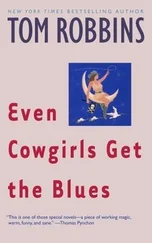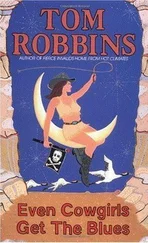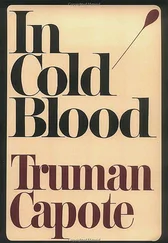At any rate, my newspaper colleagues knew nothing of my Tuesday subversion (Wednesdays were reserved for Lynda Pleet). I respected and enjoyed them despite their prejudices, and I liked the work, especially writing headlines, a word game of sorts that vaguely resembles playing Scrabble. One of my nightly duties on the copy desk was to edit the Earl Wilson syndicated celebrity gossip column. Wilson was based in New York and his column, It Happened Last Night, consisted of tidbits, meant to be provocative or revealing, about Broadway and Hollywood stars, especially those Wilson or his secret agents would observe misbehaving or celebrating some new deal at Manhattan nightclubs. Part of my job was to select a photo of a mentioned celebrity, which could be inserted into each column.
Well, one night Wilson happened to mention the great Louis Armstrong for one reason or another, and without a second thought I went into our “morgue,” selected a suitable picture of Mr. Armstrong from the photo files, had our staff artist reduce it to the proper size, and stuck it in Wilson’s column. I went to sleep that night as sweetly innocent as a newborn turtle.
I was still in my little shell when, reporting for work the next afternoon, I was summoned to the managing editor’s office, an unexpected invitation I could not easily refuse. It turned out, on the surface at least, to be a cordial meeting. John H. Colburn held up the page of the paper on which Armstrong’s beaming face appeared. He confided that there had been a lot of grumbling from readers about the picture. I expressed genuine surprise — didn’t everybody, except maybe the Grand Dragon of the Ku Klux Klan, love ol’ Satchmo? — and Mr. Colburn smiled and sent me back to the copy desk, apparently writing it off as an honest mistake.
On the copy desk I was regarded as the resident Asian expert, due to my interest in that region. There was major fighting in Laos at the time and the T-D had been giving it front-page coverage, but the editors were starting to have second thoughts about that level of attention, so I was assigned to telephone Richmond residents at random and ask the question “Do you know where Laos is?” Few did. My favorite response was, “He don’t live here. Try across the street.” The survey should have been both entertaining and disheartening to a geography buff, but all the while, in the cellar of my cerebellum, I was continuing to stew over the Louie Armstrong incident. A couple of weeks later, Earl Wilson mentioned a black woman — I believe it was Pearl Bailey — and I decided to test the waters.
It was on a Monday that I inserted the picture of Pearl into Wilson’s column. Returning to work Thursday afternoon, I’d scarcely hung up my coat and loosened my tie before I was again summoned to the boss’s office, where this time the atmosphere was about as jovial as dawn on death row. It seemed that the T-D switchboard had been lit up like the diamond counter at a Dubai convenience store. Irate callers were demanding to know what that “uppity nigger wench’s” picture was doing in their morning newspaper, and Mr. Colburn had a fistful of letters posing the same burning question.
Some subscribers complained that upon seeing Pearl Bailey’s picture they’d been unable to finish their breakfast, and despite being on the hot seat, I had to smile at the thought of outraged readers cursing the newspaper and shoving aside their uneaten flapjacks, only to glance up to see a big mammy in a do-rag checking them out from a box of Aunt Jemima’s pancake mix.
While I wasn’t threatened with immediate dismissal over my indiscretion — after all, the T-D had no official directive prohibiting the publication of likenesses of “uppity nigger wenches” — it was made pristinely clear that were I to repeat my recent errors in judgment, I’d find myself writing obituaries for a weekly rag in Ice Worm, Alaska.
Less than a month later, Earl Wilson had reason to refer to Sammy Davis Jr. Talk about uppity! Davis had recently had the audacity to marry a white woman, the sexy blond Swedish actress May Britt, an act that landed him number one with a bullet at the top of every racist’s hate chart. I thought long, I thought hard. Little devils wrestled with little angels in the innermost chambers of my conscience. The devils cheated, of course, although where my conscience was concerned they were also more familiar with the terrain.
I got up from my seat at the copy desk, crossed the newsroom to the managing editor’s office and gave two weeks’ notice. “I’ve decided to do postgraduate work at the Far East Institute at the University of Washington,” I said. This was a move I’d actually been contemplating ever since my impulsive marriage to the stranger, Susan Bush. Accepting my resignation, Mr. Colburn shook my hand and wished me success — whereupon I returned to my post and proceeded to make certain that the ultra-uppity face of Sammy Davis Jr. appeared in every edition of the next morning’s Times-Dispatch.
I laughed myself to sleep that night. And two weeks later, I packed up my instant wife, her two-and-a-half-year-old daughter, and our belongings, and drove to Seattle.
The day before I left Richmond (January 2, 1962), I dropped in at the Village Inn for a farewell beer, shaking hands with Stavros “Steve” Dikos, the burly, curly-haired, ever-kindly owner, thanking him for maintaining and overseeing so compassionately what many might regard as a kind of wildlife preserve. The wildlife itself took turns, some a trifle enviously, wishing me luck on the road. I even received a catlike nod from “Mona Lisa,” a woman of a certain age who sat nightly at the counter chain-smoking, sipping industrial wine, and never speaking to anyone, just staring straight ahead with a faint, enigmatic smile, as if she and she alone knew when the Other Shoe would drop.
And speaking of enigmas, I’d earlier that day stopped by Il Palazzo della Contessa di Pepsi, wanting one last visit to prove to myself that the place existed outside of my imagination. Naturally, it was closed.
During my residency on this planet, I’ve had only one other encounter with an approach to retail merchandising quite as inexplicably single-minded as the Fan District Pepsi store. It occurred in Gibsonton, Florida, a small town southeast of Tampa that is winter quarters for approximately thirty traveling carnivals. Throughout the late 1980s and most of the nineties, I visited Gibsonton once or twice a year looking for canvas sideshow banners to add to my collection (good ones were hard to find since nowadays banners are made so cheaply they’re usually in a state of ruin after only one season); hanging out in the Show Town Bar, whose walls were adorned with photos of freaks and performers (they’ve now been moved to a newly built carnival museum); and generally absorbing the town’s peculiar ambience.
For a few years, the mayor of Gibsonton was the Human Torso, a woman born without arms or legs. To sign official documents, Mayor Torso grasped the pen between her teeth. Whether or not she was married to a giant as was rumored I couldn’t say, though it was not unusual to see a man, or men, more than eight feet tall about town, and there were plenty of tiny people on the scene as well. However, Gibsonton’s most famous resident, as even the most casual reader of supermarket tabloids may recall, was the Lobster Boy, the victim in a lurid murder case in 1992.
A rare congenital deformity had left the Lobster Boy with fingers and toes fused tightly together in a manner that resembled large claws. Depicted on banners as an actual, regular-size lobster with a human head, lolling on a seaside rock to the stunned amazement of bikini-clad bathing beauties, he was able — in the days before political correctness roamed the earth — to turn his misfortune into a fairly lucrative sideshow career. Walking with difficulty, he spent much of his time offstage confined to a wheelchair. He was seated in that chair watching TV when he was shot in the head by an eighteen-year-old Gibsonton neighbor, hired for the job by Mrs. Lobster Boy, who in court (her trial ran concurrently with the O. J. Simpson trial and was far more interesting) offered a spousal abuse defense. She claimed that every time she squeezed past his chair (they lived in a trailer where space was tight), he would reach out and pinch her with his “claws.”
Читать дальше












